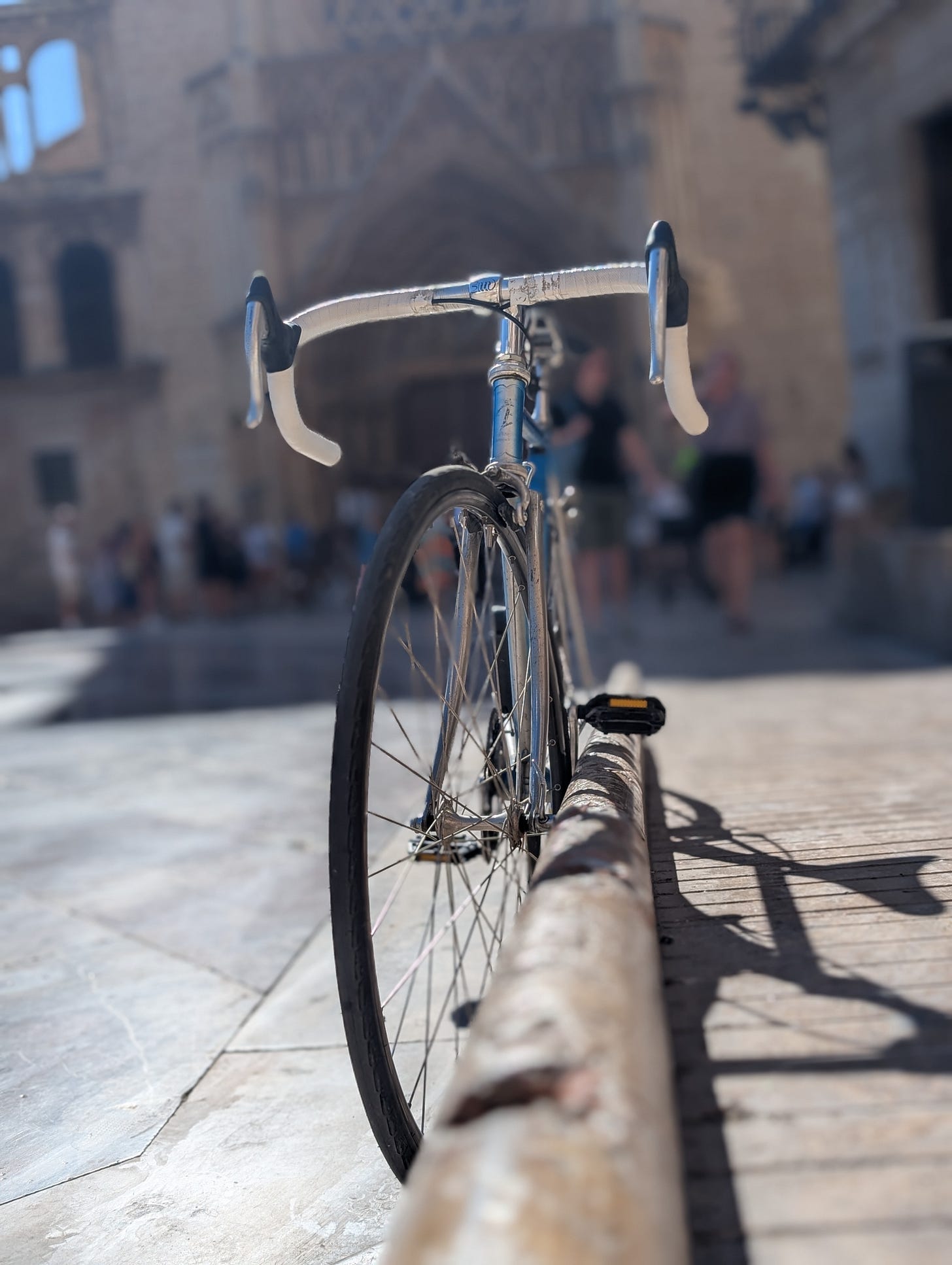Never Retire: Persistence vs. Stupidity: Why Midlife Demands a Reset
Persistence compounds. Stupidity exhausts.
There’s a fine line between persistence and stupidity. I’ve always leaned toward persistence, but I’ve also learned how easily it can slip into overwork, into the law of diminishing returns.
More isn’t always better—it’s just more.
At some point, extra hours don’t equal extra money. Even for clients who pay by the article, the pool isn’t endless. Why burn through two or three pieces a day for 15 days, when one or one and a half a day stretched over 20 or 25 days gets me to the same place—without draining the tank?
Now I work differently. I ride my bike in the morning, sit on the bench outside our building, enjoy this neighborhood, and then come inside to write. I still work hard, but I’ve learned that pacing myself is actually persistence.
Working more for the sake of more? That’s stupidity.
The Real Test of Persistence
Persistence isn’t about brute force. It’s about consistency paired with adjustment.
The writer who keeps sending the same story pitch after 20 rejections? That’s not persistence. That’s repetition. Persistence is rewriting, reframing, and trying again smarter.
The freelancer who keeps saying yes to low-paying clients because “it’s better than nothing”? That’s not persistence. That’s fear. Persistence is covering the floor while also carving space to push the ceiling higher.
True persistence compounds. It adds up slowly, like interest. Stupidity just burns energy without creating anything new.
The Illusion of Persistence
There’s also a kind of fake persistence I see all the time: people who talk endlessly about what they’re going to do, complain about what’s wrong, or make elaborate plans they never follow through on.
That isn’t persistence. That’s inertia disguised as motion.
Real persistence cuts through the noise. It isn’t about talking the longest or worrying the loudest. It’s about actually doing the work.
The Reset at Midlife
At 50, the margin for error feels sharper. What I regret isn’t working hard—it’s the years I spent working too much on things that didn’t matter, instead of taking bigger, riskier moves when I could have.
That said—it has all worked out. So regret might be too strong of a word. You’re the sum of your experiences.
Here’s what persistence looks like for me now:
Writing Never Retire every week, even when it’s uncomfortable.
Filming for Friki de Bici, even when I’m not sure if anyone will watch.
Practicing Spanish every day, even when I stumble.
And here’s what stupidity looks like:
Piling on freelance hours that don’t increase income.
Taking work just because it’s there, instead of because it moves me forward.
Confusing motion with momentum.
The key is knowing which is which—and having the discipline to stop when persistence starts tipping toward stupidity.
Smart persistence means creating new challenges even when you don’t technically need them. Staying put in comfort feels rational, even responsible. But comfort without challenge is its own kind of slow decline. If you know there’s something harder, better, or more alive on the other side, aren’t you selling yourself short by not going for it?
Why This Matters for Never Retire
Never Retire itself is my persistence in practice. Not stubbornness. Not overwork. Not inertia disguised as action.
Persistence is the rhythm of showing up, learning, adapting, and building a second act that keeps you engaged and alive.
That’s the difference between compounding value and simply exhausting yourself.
A Note on Support
That’s why I keep showing up here. Writing, filming, building this project each week—not because it’s easy, but because it matters.
If you’ve been reading for free and this resonates, consider upgrading today. Paid subscriptions start at just a few euros or dollars a month. Lifetime access is €90/$100.
Your support isn’t charity. It’s what keeps Never Retire alive in real time—not as a glossy postcard of life abroad, but as the record of what it really takes to keep showing up, long after most people stop.



This! Yes! I’m working on “building a second act that keeps you engaged and alive.” and this article has given me many good questions to ponder. I’m having a hard time coming up with a different way to work: with the physical after effects of the busyness -m— Stress? An intense day? Self inflicted? A ‘system’ I no longer subscribe to? A new definition of success? Hmm… more things to ponder — I create for myself. Unlearning habits/hustle tendencies I’ve instilled for the last 30 years is proving challenging! Haha. But I’m giving myself grace about it all. And articles like this one are helping me reshape my life and enjoy it more!
I like the persistence angle here.
I’d couple it with consistency. Two weeks back I was in Stockholm, leading four discussion forums for a client of mine who organises events in a particular niche of financial services. Four folks came up to talk to me about doing some work with them. Being out there at the event helped; it is my fourth year working with the client.